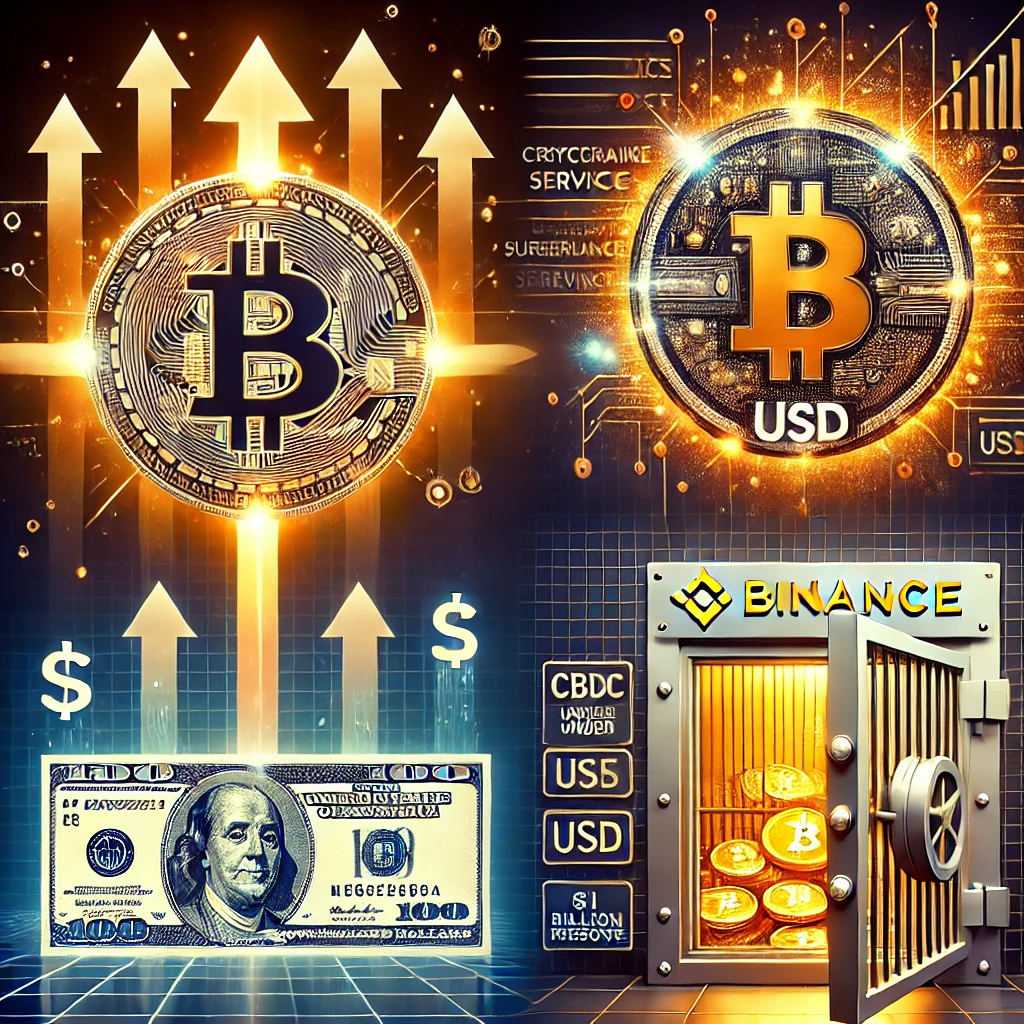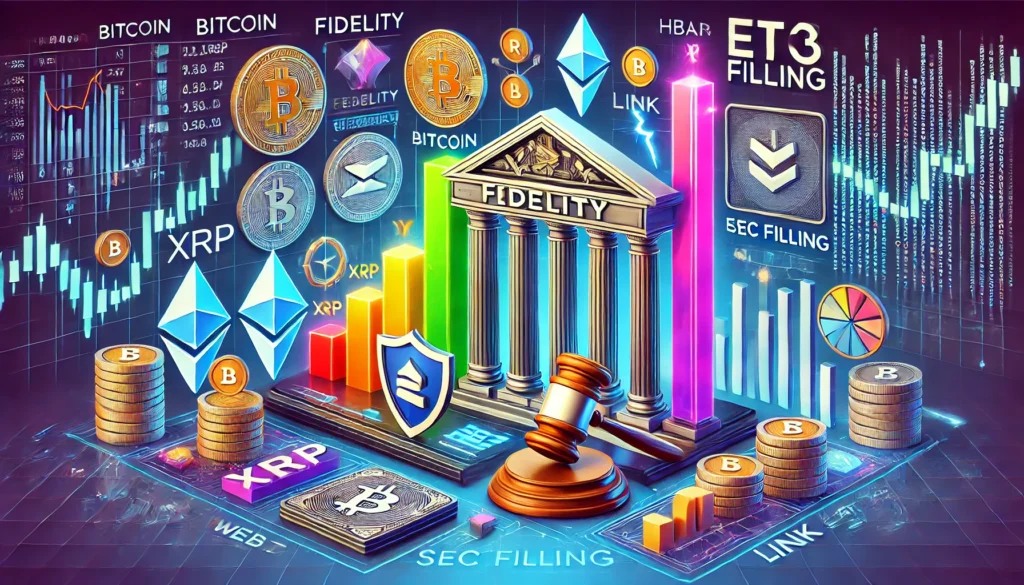5 Crypto Insights: Bitcoin’s Stability, Tether’s EU Challenges, Hedge Fund Moves, and Industry Innovations
Dive into the dynamic world of cryptocurrency with today’s most impactful developments. From Bitcoin maintaining its $100,910 support level amid altcoin declines to OKX’s innovative strategies for combating debanking, the crypto market continues to evolve. We explore new altcoin projects gaining traction, insights into DeFi protocols reshaping blockchain ecosystems, and strategic global partnerships that underscore […]
9 Crypto Highlights: Bitcoin Whale Moves, ETF Innovations, Stablecoin Demand, and Global Adoption Trends

Spot Bitcoin ETFs Witness Record Withdrawals Amid Declining CME Futures Premium U.S. spot Bitcoin exchange-traded funds (ETFs) have experienced unprecedented single-day outflows, with $680 million withdrawn, ending a 15-day streak of positive capital inflows. Notable contributors to this withdrawal include Fidelity’s FBTC, Grayscale’s Bitcoin Mini Trust, and the ARKB ETF by Ark and 21Shares. This […]
Crypto Highlights: Bitcoin’s $100K Comeback, Binance’s USD Revival, CBDC vs. Crypto Debate, and Institutional Moves Shaping the Future

Bitcoin Reclaims $100K Amid Mixed Market Sentiment Bitcoin has surpassed the $100,000 mark, reflecting a significant milestone in the cryptocurrency market. This achievement comes amid varied market sentiments, with some investors expressing optimism about continued growth, while others remain cautious due to potential volatility. The recent price movement underscores Bitcoin’s resilience and its role as […]
Binance’s CAT Listing to Europe’s Bitcoin Reserves: 5 Key Trends Driving Ripple’s Stablecoin, Mining Bans, and BTC’s $110K Surge

Explore the latest developments shaping the cryptocurrency landscape, from Binance’s high-profile listing of the IP-backed Simon’s Cat token to Ripple’s RLUSD stablecoin boosting XRP’s utility. British Columbia’s continued Bitcoin mining ban contrasts Vancouver’s pro-Bitcoin stance, while European leaders advocate for a strategic Bitcoin reserve to hedge against economic risks. As Bitcoin rallies past $106,000, experts […]
5 Crypto Milestones: U.S.-Russia Bitcoin Rivalry, MicroStrategy’s Bold Move, XRP’s Stablecoin Boost, Bitcoin’s Record Surge, and $3.2B Crypto Inflows

From the U.S.-Russia rivalry over Bitcoin reserves and MicroStrategy’s bold Bitcoin purchases to XRP’s growing utility through RLUSD stablecoin integration, the crypto world is buzzing with action. Bitcoin’s record-breaking surge past $106,000 and a staggering $3.2 billion in inflows to crypto products reflect rising institutional confidence and mainstream adoption. Dive into the stories driving the […]
5 Crypto Highlights: Ethereum’s DeFi Boom, MicroStrategy’s Nasdaq Milestone, Thailand’s Blockchain Push, BlackRock’s Bitcoin Endorsement, and Revived Exchange Marketing

Explore the latest transformative developments in the cryptocurrency world with this detailed analysis of five major highlights. Ethereum’s liquid restaking protocols are revolutionizing decentralized finance by unlocking liquidity and boosting total value locked (TVL). MicroStrategy’s inclusion in the Nasdaq-100 Index underscores the growing intersection of Bitcoin and traditional financial markets, setting a new precedent for […]
5 Major Crypto Developments: XRP’s Listing, Chainlink’s Surge, Blockchain Innovations, Tech Collaborations, and Bitcoin Strategy Evolution

Explore the latest advancements in the cryptocurrency world with this comprehensive visualization of key developments. From XRP’s major exchange listing and surging market interest to Chainlink’s impressive 22% price rally driven by growing adoption in decentralized finance, the crypto ecosystem continues to evolve. Innovative platforms like Solana and Lightchain AI are pushing technological boundaries with […]
9 Updates Institutional Momentum Security Challenges Altcoin Gains

The cryptocurrency world is buzzing with institutional moves, altcoin surges, security challenges, and regulatory shifts. 1. Fidelity’s FBTC Sees Significant Net Inflow of $25.1 Million Fidelity Digital Assets’ Bitcoin Trust (FBTC) recorded a major inflow of $25.1 million, underscoring the increasing institutional interest in regulated Bitcoin investment products. This inflow, largely transferred from Binance, highlights […]
4 Clear Signs Altcoin Season is Coming Soon and How to Benefit

Altcoin season is a very common and hyped term in crypto market. But What is it and when it comes? One needs to learn many things to understand this. Picture yourself in a bustling amusement park. Bitcoin is the biggest and most popular ride, attracting long lines and the most attention. However, the park is […]
Mastering Altcoin Investments: The Power of Fundamental Analysis

Imagine you have seen a very promising altcoin and you want to invest in it. How will you decide whether you should invest or not? Let’s understand it with an assumed scenario! Imagine you’re in a bustling marketplace. You see a vendor selling a shiny new gadget. It looks impressive, and the vendor is making […]

